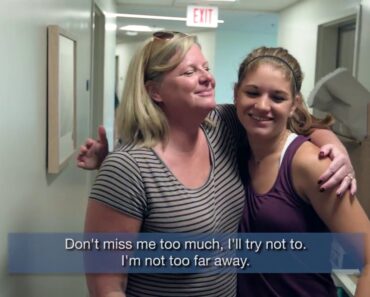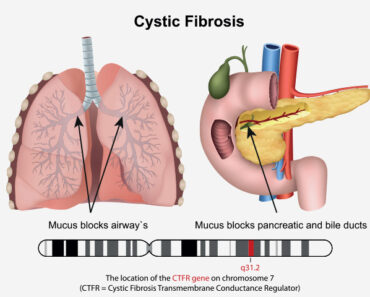Infants cry to communicate their needs before they learn to speak. Parents gauge the need based on the context and fulfill it accordingly. However, it could often be difficult to determine the exact requirement of the baby based on their cries. The inability to express adequately may make babies crankier. In such scenarios, baby sign language could be an effective tool for both the baby and parents.
In this post, we give you all the information about baby sign language, how to teach it to the baby, its impact on verbal development, and few easy signs to know.
What Is Baby Sign Language?
Baby sign language is a form of communication that lets the baby use hand signs and gestures to communicate before learning to speak. It takes considerable time for babies to pick up language skills. They generally start talking at the age of 12 months by uttering a few words. However, infants display a need to communicate by the age of six months. Since gross motor development occurs before speech development, babies can be taught ways to express through symbolic gestures(1).
Is Baby Sign Language The Same As American Sign Language (ASL)?
American Sign Language (ASL) is a natural language that involves using hands and face to communicate. It has all the basic characteristics of a language coupled with a distinct grammar(2).
Baby sign language involves simple gestures and is a tool for parents to understand their baby’s emotions before they communicate verbally. It is not a formal sign language like American Sign Language. The signs may be picked up from American Sign Language (ASL), British Sign Language, or Japanese Sign Language, but modified versions are used to help babies learn them easily(3).
Baby sign language does not necessarily involve teaching babies the complex grammar rules or sentence structure of American Sign Language. Besides, baby sign language may not suit differently-abled infants and children, such as those with speech and listening-related problems. If the parent has any concerns about their baby’s speech and listening abilities, they must consult a doctor and learn relevant sign languages as recommended by experts.
Will Sign Language Affect Baby’s Verbal Skills?
There is no research indicating that teaching sign language could impact a baby’s subsequent verbal skills and speech development(1). In fact, it may help improve verbal interaction since parents often use words while using baby sign language.
It is vital that parents use words and sentences in conjunction with the signs, making the baby associate words or phrases with the signs. As the baby grows, you may rely less on signs and use the associated word instead, replacing the sign with the word eventually (4).
The positive effect of sign language on a baby’s verbal skills will depend on the usage of words. Parents, who rely only on signs or replace words with signs, may notice no improvement in the baby’s verbal development. Excessive use of signs at a stage (between 18-24 months) when the baby can speak simple words may even cause regression in the baby’s verbal skills. Therefore, incorporate the use of words with signs to benefit the baby’s verbal skills and oral language development.
How To Teach Baby Sign Language?
Here are a few tips for teaching baby sign language to your little one(4).
- Start at the right time: It is essential to have patience and set the right expectations while teaching a baby sign language. Starting too early might not yield the desired results. If babies are taught a few simple signs at 6-7 months of age, they might start using them when they turn 8-9 months old.
- Sign but don’t forget to speak: Speaking the words aloud while signing them will help the baby associate the words with the signs. Thus, they will learn to sign and learn to speak.
- Start with useful signs: Teach your baby useful gestures that describe things around them or activities they do. These should be important things, such as mommy, daddy, hungry, thirsty, and sleepy.
- Include your baby’s signs: If your baby has developed his/her own sign, use it while teaching sign language. They might have a strong association with the sign, so using them is the right approach.
- Practice often: Regularly repeating the signs with your baby can help them pick up the gestures quickly. Include a practice session in your daily schedule to make the baby see the signs consistently and understand them successfully.
- Provide positive reinforcement: Praise your baby when they use the right sign. You may smile and use a cheerful tone to praise them. Prompt responses to the sign can also serve as positive reinforcement.
- Be calm: A baby may take time to learn the signs. It is crucial to keep calm and let them take their time. Don’t get angry or frustrated if they make mistakes or forget the gestures. Avoid using any force; it will only derail the progress.
- Keep everyone in the loop: Important members of your baby’s life should be aware of their sign language. It will help the caretakers adequately fulfill your baby’s needs and maintain consistency in communication. Knowing the language can also ensure easy communication with other family members such as grandparents and siblings.
- Use your face: Making signs along with associated facial expressions could pique the interest of your baby. They are fascinated by our facial expressions, making it easier to attract the baby’s attention to the signs.
- Get formal training: Many institutes and hospitals offer formal baby sign language courses. You may contact them and enroll in a baby sign language class. Several books and videos about baby sign language are also available.
Benefits Of Baby Sign Language
Learning sign language can be valuable for your baby and provide the following benefits(4).
- Makes communication easier: Babies usually begin to understand their needs by the age of 8-9 months. However, they may be unable to vocalize them until 18-24 months, often leading to frustration and irritation. Sign language could help babies express themselves and communicate their needs effectively. It is a great tool to bridge the communication gap between the baby and parents.
- Encourages bonding: Practicing sign language with your baby may help you connect with them better. When your baby starts expressing using sign language, you will be able to understand them better. These sessions may serve as an excellent parent-child bonding activity.
- Works as a fun activity: Make the learning interactive and fun for your child. Practicing some fun songs or nursery rhymes in sign language can turn it into an enriching experience.
The Best Signs To Teach A Baby
Here are a few appropriate signs to teach a baby. You may modify these signs based on your convenience. Remember to say the word associated with the sign, too(5).
1. All done
Extend your arms with your palms facing inward. Gently sway your hands towards yourself repeatedly.
2. More
Pinch the fingertips of each hand and tap them together multiple times.
3. Eat/food
Raise pinched fingertips to your mouth.
4. Milk
Hold an imaginary glass in your hand and bring it to your mouth.
5. Mommy
Spread the fingers of your right hand such that the fingers point upward and the palm faces to the left. Tap the thumb on your chin repeatedly.
6. Daddy
The hand position is the same as that of the mommy sign. However, you tap the forehead instead of the chin.
7. Sleep
Spread your fingers and extend them toward your forehead. Move your hand downward slowly and touch the chin. Close your eyes while moving the hand for added effect.
8. Play
Hold the hands such that the palms face inward. Close your three middle fingers. Extend your thumb and pinkie finger, and rotate the wrist back and forth to indicate play.
9. Poop/diaper change
Hold the hands close to one another such that the palms face inward. Make a loose fist from each hand. Sway the wrists and slowly bring your arms down, pointing the finger downwards while doing so.
10. Bath
Make a fist with both hands and rub it against your torso as if scrubbing your body.
11. Stop/no
Extend your right hand and hold your left hand such that the palm is horizontal and facing upward. Bring down the right hand on the left palm repeatedly, making almost a chopping action.
12. Help
Fist one hand with the thumb extended upward and put it on the lower hand, which is horizontal with the palm facing upward. Bringdown the fisted hand repeatedly to make the sign.
13. Car/going out
Close your fingers and rotate your hands in a motion representing the movement of a steering wheel.
14. Pain/hurt
Close all your fingers except the index finger. Bring the index fingers of each hand together multiple times to make the sign.
15. Hold me
Bring your arms close to the body and place them over each other. Rock the arms gently as if holding an imaginary baby.
16. Thank you/I love you
Flatten your hand with the palms up and touch your chin with the fingers. Extend the hands forward repeatedly outward as if giving a flying kiss.
17. Please
Place your dominant open hand over your chest and rub circles in the clockwise direction.
18. Open/enter
Point your fingertips downward with the palms facing you. Bring the hands close to one another and then move them away repeatedly.
19. Close/leave/let’s go
It is the same as the open/enter sign but in reverse, as if your hands are an imaginary gate and you are closing it.
20. Look there/we are going there
Hold your arms close to your torso. Fold your elbows and then extend them out while using both your hands to point in a direction.
21. Going to the doctor
Extend your left hand and place three fingers of your right hand on the left wrist as if checking your pulse.
22. Me/mine
Place your right hand on the left side of your chest and tap it repeatedly.
23. Ball/toy
Hold your hands such that the palms face one another. Spread out the fingers. Touch the corresponding finger of each hand and sway your wrists inwards.
24. Give/want
Extend your arms and turn the hands such that the palms face upward. Bend the fingers slightly and bring the hands close to your body repeatedly as if pulling an imaginary object.
25. Wait
It is similar to the give/want gesture. However, you move and sway the hands and fingers outward.
Early communication with your baby can be made smoother by introducing them to sign language. Select signs that are important for the baby and are simple for them to learn. Go easy on your child and let them pick up the signs at their own pace. If your little one is unable to do the exact hand sign, introduce modifications that are easier for them to follow.


































